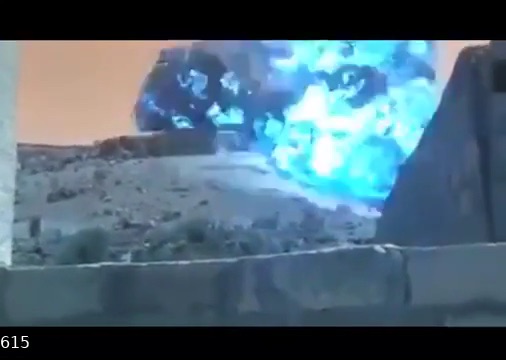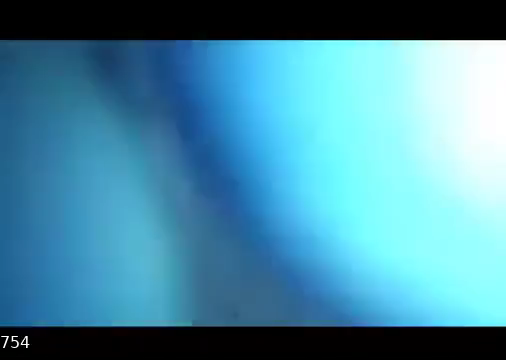ScNat
saturation du détecteur photographique et de la bande audio
Détecteurs saturés
Une séquence a été filmé par un Yéménite qui en est sûrement mort… Cette zone était bombardée depuis longtemps et je présume qu’il espérait capturer une explosion spectaculaire, se pensant à l’abri considérant les explosions précédentes… c’était sans compter the blue ball of death:

Si beau et si terrifiant… I am become death, the destroyer of worlds.1
Cette lueur bleue est-elle due à l’ionisation intense de l’air par les flux de neutrons, tel qu’observé par plusieurs témoins d’incidents de criticité? 2
La bande son est intéressante:
-
L’onde de choc se distingue du bulbe incandescent à 615 (on note au sol la levée de poussière à son passage).
-
Le souffle de l’explosion atteint l’observateur à 627. À partir de cet instant on entend le bruit (habituel?) d’un grondement assourdissant continu…
-
mais à 739 un nouveau bruit se distingue: celui d’un bruit blanc qui pourrait être engendré par un flux intense de neutrons saturant le convertisseur ADC du micro et engendrant des valeurs aléatoires d’octets, d’où le white noise enregistré.
Le détecteur CMOS aussi semble être saturé par un flux de particule au frame 754:

Le coin supérieur droit ne serait pas une image optique mais une multitude de neutrons qui percutent directement le sensor et sa mosaïque de Bayer.
-
“We knew the world would not be the same. A few people laughed, a few people cried, most people were silent. I remembered the line from the Hindu scripture, the Bhagavad-Gita. Vishnu is trying to persuade the Prince that he should do his duty and to impress him takes on his multi-armed form and says, Now, I am become Death, the destroyer of worlds. I suppose we all thought that one way or another.” J. Robert Oppenheimer s’exprimant sur l’essai réussi de la première bombe nucléaire allez voir… c’est émouvant. ↩
-
“Many criticality accidents have been observed to emit a blue flash of light. The blue glow of a criticality accident can result from the fluorescence of the excited ions, atoms and molecules of air (mostly oxygen and nitrogen) falling back to unexcited states, which produces an abundance of blue light.” Wikipedia ↩